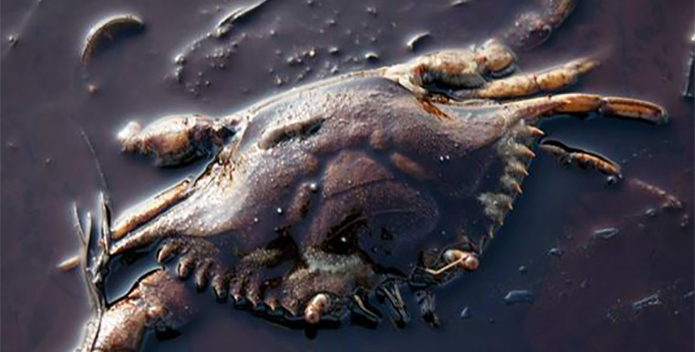The following was first published in the Baltimore Sun.
It's difficult growing up a crab. Cold winters, predators, dead zones, vanishing habitat—these are just some of the threats a young crustacean faces. And now, a plan by the Trump administration to open the Atlantic seaboard to oil and gas exploration and drilling could upset the already precarious life cycle of the Chesapeake Bay blue crab.
The health of the bay crab population varies year to year. Scientists recently reported cold temperatures this past winter killed 35 percent of female crabs (juvenile crabs increased). So far, careful scientific stock monitoring and management has been successful in keeping the crab population sustainable, even in the face of challenging conditions. But allowing offshore oil exploration and drilling would throw a wrench in those management strategies, spelling potential disaster for Chesapeake Bay blue crabs—a timeless symbol of our region's heritage and way of life.
All of the Bay's female blue crabs overwinter at the mouth of the Bay. When their larvae are released they float in the top centimeter of the water column out into the ocean. Once they grow swimming fins, they dive down and ride bottom currents back into the bay. An oil spill offshore at the wrong place and time could destroy an entire year class of bay blue crabs. Juvenile and larval forms of other finfish and shellfish could be similarly affected. The economic damage in Maryland and Virginia would be huge.
When we drill, spills are inevitable. Even before the BP Deepwater Horizondisaster in 2010, major spills were not uncommon. Between 2000 and 2009, 17 major spills discharged oil and other toxic substances from offshore platforms and pipelines. Hurricane Katrina and Rita alone caused nine spills involving 4.8 million gallons of oil. Oil is composed of hundreds of chemicals, including toxic compounds that can be poisonous to blue crab larvae. It also can physically smother other wildlife and contaminate plankton near the surface.
Even minor accidents that routinely accompany oil exploration could significantly impact the Chesapeake blue crab and other marine life. Between 5,000 and 10,000 oil spills are reported annually at drilling platforms, pipelines, tankers and coastal facilities in U.S. waters. The average amount of oil inadvertently released each year from oil production is 157,000 barrels.
Water constantly moves between the bay and the Atlantic, so a spill off Maryland's or Virginia's coast could have devastating consequences for the Bay region, not only for juvenile crabs but for fish, birds, and other marine animals.
An oil spill would also jeopardize the region's commercial fishing, recreation and tourism economies. These industries in Maryland and Virginia combined add roughly 182,000 jobs and $10.8 billion in gross domestic product. The impact from drilling to Marylanders and Virginians is unthinkable.
In total, the Trump administration's proposal to expand gas and oil development could threaten more than 2.6 million jobs and roughly $180 billion in gross domestic product in coastal states.
For all these reasons and more, the Trump administration must reverse course on its ill-informed plan to lease the East Coast for offshore drilling. To risk losing our cherished Chesapeake Bay blue crab to this industrialization is to risk our very way of life.
—William C. Baker, CBF President, and Jacqueline Savitz, Oceana's Chief Policy Officer for North America




